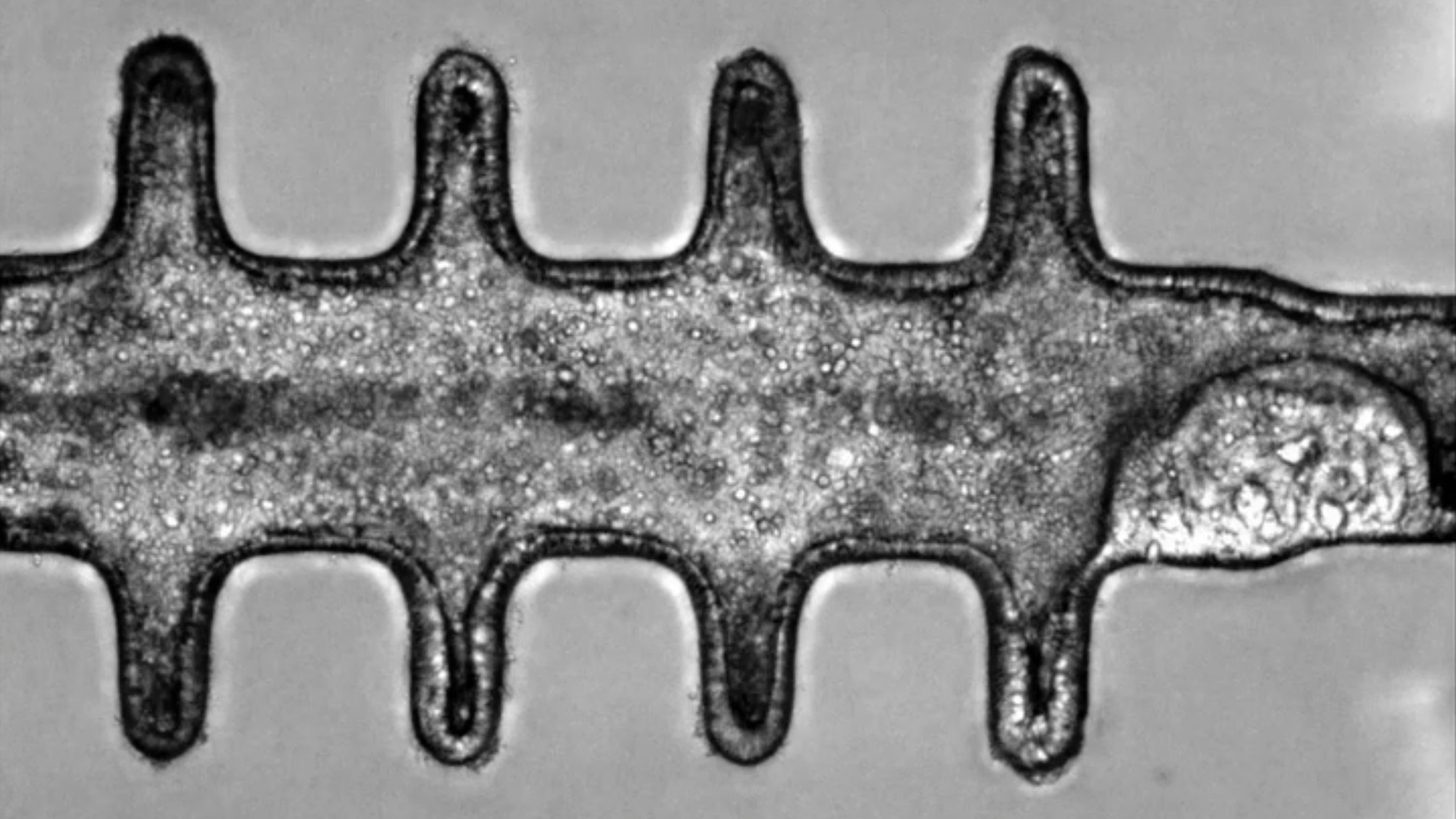
Scientists created realistic, miniature versions of a colon in the lab and gave them tumors, allowing the team to study colorectal cancer in exquisite new detail.
These "minicolons"' are so-called organoids, which are 3D structures grown from stem cells such that they resemble full-size organs. In this case, the organoids were grown from mouse cells and driven to mature in a lab dish with the help of growth-inducing chemicals.
Organoid development has become increasingly popular of late, namely because these miniature structures can more accurately mimic the unique intricacies of organs than traditional models made from cells can. This makes organoids great platforms for studying how diseases develop and progress, as well as for potentially identifying new drugs to treat those illnesses.
So far, scientists have grown myriad tiny organs from both mouse and human cells. These range from minibrains to tiny replicas of testicles, and scientists are even conducting organoid research in space.
In this latest installment, scientists have created colon organoids using mouse stem cells, which they say are much more complex than previous models. That's because the new minicolons contain a diverse mix of cells that are carefully arranged to reflect the true organization of the colon.
Related: Lab-grown 'minibrains' help reveal why traumatic brain injury raises dementia risk
The team first developed this technology in 2020 as a way to model healthy intestines. But now, in a new study published Wednesday (April 24) in the journal Nature, they have demonstrated that it's possible to trigger colorectal cancer in these organoids by switching on cancer-driving genes in their tissue.
In the experiments, colorectal tumors formed in the organoids in exactly the same way they do in mice, the researchers reported. The tumors could be grown in a lab dish for several weeks, allowing the team to watch how they change over time.
A major advantage of this new model is that scientists can study colorectal cancer in much more detail, zooming in on specific groups of cells, Matthias Lütolf, co-senior study author and a professor of bioengineering at the Swiss Federal Institute of Technology in Lausanne, told Live Science.
Because the new organoid is more complex than previous models, scientists can study not only which cells give rise to colorectal cancer but also how the individual cells within those tumors differ from each other — a phenomenon known as intratumor heterogeneity. Subtle differences in cells within a tumor can affect how the cancer responds to treatment, research suggests.
The new minicolons can also be used to study how conditions in the colon could potentially affect tumor formation. This includes the influence of a person's diet or the specific by-products of metabolism, or metabolites, that are made by resident microbes. Such experiments could reflect the true conditions in the body better than existing models that haven't considered these factors, Lütolf said.
Lütolf and colleagues also used the minicolons to identify molecules that may play an important role in why cancer develops in the first place. This suggests that these organoids could, in due course, become a valuable tool for identifying and testing new drugs to treat colorectal cancer.
As a proof of concept, the team found that they could block the development of colorectal cancer in the minicolons by subduing an enzyme called glutathione peroxidase. This enzyme is normally used by tumors to help protect them from being attacked by the immune system. This finding hints that the gene that produces this enzyme could be a potential new drug target for the disease.
Going forward, the team wants to grow these minicolons from cells that are derived from patients with colorectal cancer, so the researchers can develop an equivalent organoid for humans. There are key differences between mouse tumors and human tumors, so this step will make the work more relevant for cancer patients, Lütolf said.
If these minicolons can be made using human cells, the organoids could become an "extremely powerful" tool for quickly testing different types of drugs against colorectal cancer, he added. They could also help answer questions about the role of other nearby cells, such as immune cells, in tumor development, he said.
Ever wonder why some people build muscle more easily than others or why freckles come out in the sun? Send us your questions about how the human body works to community@livescience.com with the subject line "Health Desk Q," and you may see your question answered on the website!







